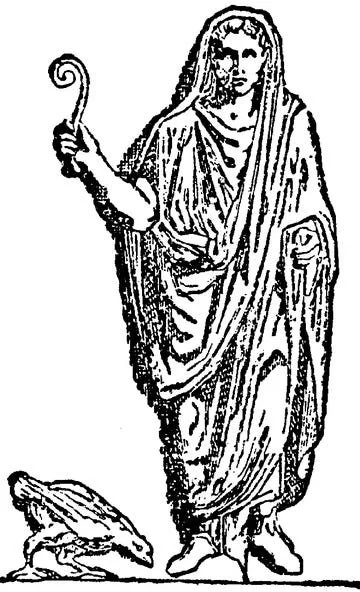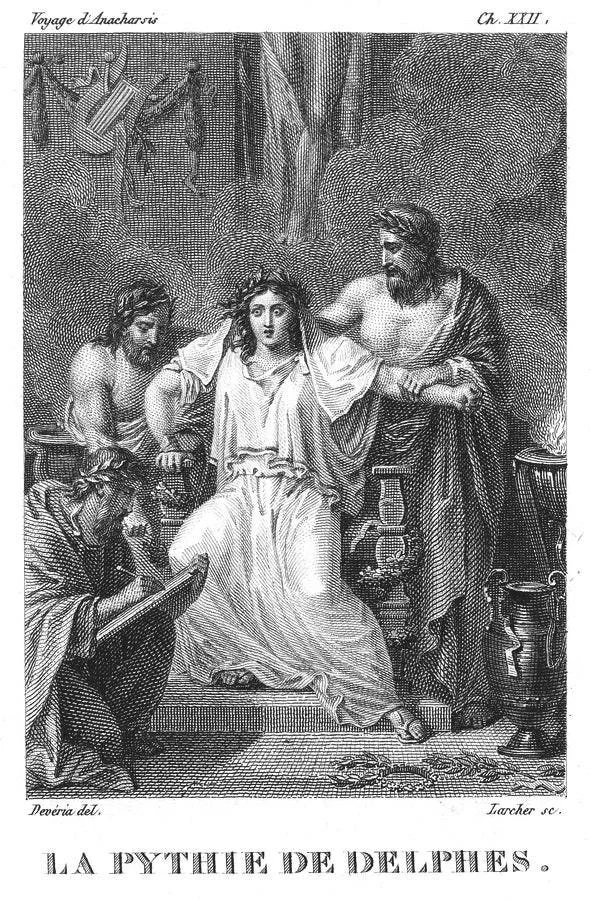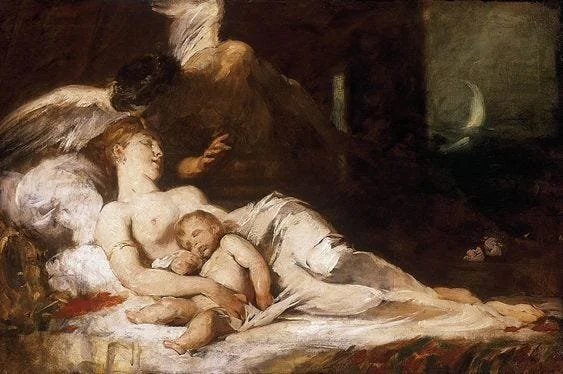Ancient Greek Methods of Fortune Telling
Lately I have been burning up inside with the dreadful prospect of my future- and the even more horrifying idea that I should not see it coming, or have any duty trying to control it. The only thing that brings me solace is the knowledge that every human to walk the Earth has probably felt the same. No matter who you are or where you come from, you have probably at some point or another, eagerly attached yourself to an illusive prospect that vaguely guarantees prosperity in your future. But how do we know what is true? For centuries, humans have been drawing on the universe to answer that question. In particular, the ancient Greeks were masters at communicating with divine realms, and developed some wonderful and whimsical fortune telling mechanisms. Here are my favourites.
Augury
Augury was the art of observing the sky for predictions of the future. It was interpreted from practices of Greeks, but was commonly being used by Romans in early mythology. The emphasis on the sky was because Augury was thought to be a communication with the Pantheon of Gods that resided above, particularly their will and responses to events on Earth. These predictions, or ‘Auspices’, had a significant effect on the actions of people, often advising if laws should be passed or important military decisions should be made. Auspices would be read by ‘Augurs’, who were specially trained, high-up Roman Priests. There were several types of Augury, including Ex Caelo, meaning ‘from the sky’. This involved watching for lightning and thunder, and relating it to messages from the Roman sea God, Jupiter. Another was Ex Avibus Oscines, meaning ‘from the calls of birds’. This was centred on the way birds ate: if birds weren’t eating, it was a negative omen, whereas if birds devoured food hungrily, this was positive. Ex Quadrupedibus was the study of four-legged animals being found in mysterious places such as across a footpath. These were commonly seen as offerings from the Gods in the form of omens, for example, a bear is an offering of Artemis while an owl is an offering of Minerva. If the practice of Augury can teach you one thing, it should be that the natural world is your mirror, and if you listen, it will lead you to your truest self.
A Roman Augur with a chicken, holding a Lituus (wand used to mark out a ritual space within the sky).
The Oracle of Delphi
The Delphic Oracle was a hotspot for supplements from across the Mediterranean, eager to hear of the future that awaited them. Dating back to the 16th Century BC, the Oracle was situated within a temple between the vast terrain of Mount Parnassus, and was initially constructed as an offering to the Earth Primordial Gaia, who was then substituted with Gods Apollo and Dionysus. Interestingly, the geography of Delphi itself has a history with Augury, as it was seen as the point of intersection between two eagles flying East and West. For this reason, Delphi was commonly referred to as the ‘naval’ of the Earth. The Oracle worked by having a Pythia (a high priestess) who would stimulate messages from the Gods by bathing in the prophetic waters of the Spring of Castalia, eating laurel leaves and inhaling the vapours which rose from a cleft in the ground beneath which she sat. Supplements would line up to see the Pythia, and were often turned away if the Gods did not have a message for them. For this reason, people would often perform sacrifices or rituals to ensure a better chance at hearing their oracles. Once inside, they would ask the Pythia a question, and would be met with her answer. It is not known for sure the type of answer given by the Pythia- whether it was an outburst of emotion, or a vague murmur, or a whisper. It is said that priests acted as intermediaries between the Pythia and the supplement, often relaying the Oracle back. Delphi’s Oracle was incredibly sought after in ancient society, and is featured in a number of Ancient texts, namely Homer’s Odyssey and Iliad. While it is not currently in business, I think a credible psychic comes pretty close.
The Oracle Of Delphi, In A Trance, Mary Evans.
Oneiromancy
Oneiromancy was the sacred art of analysing dreams and drawing prophetic meanings from them. For the Greeks, sleep was a space where the Gods or the deceased sent prophetic messages to the subconscious self. In this liminal state, dreams were manifestations of what was to come, or perhaps what was already underway for an individual. In the 2nd Century AD, Artemidorus wrote three books under the title, ‘Oneirocritica’, which outlined the predictions of various symbols and signs one may encounter in a dream. He speaks of physical omens, such as the appearance of tools used to smooth surfaces which indicate an end to hostility. He also notes natural omens, such as wolves which represent a violent enemy. Oneiromancy is perhaps one of the oldest and most withstanding method of fortune telling that exists. Psychologically, sleep is a state where subconscious feelings, desires, thoughts and emotions are processed, so it’s no wonder that ancient communities have been so reliant on dreams throughout time to inform them of what their future holds. In today’s world, many Pagan rituals use this same belief. Some spells encourage the setting of an intention prior to sleep to be open to receiving divine messages, such as a question to be answered, and then placing a mystical object beneath the pillow. This could be a crystal, a charm, or a necklace.
Hypnos (Dream), Gyula Benczúr, 1920.
There is beauty in these prophetic arts. As I write on them, they teach me. It makes me think that we are not so far away from mystical thresholds. This alone gives me peace that whatever my future is, it is kept in divine hands.


